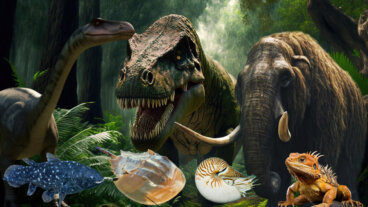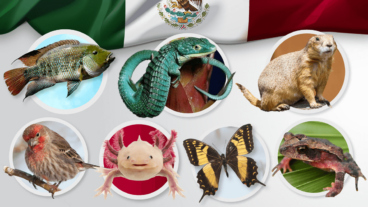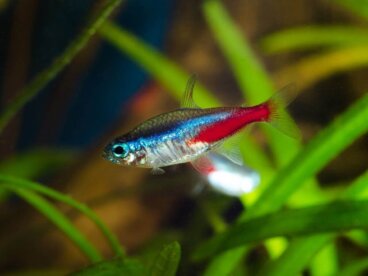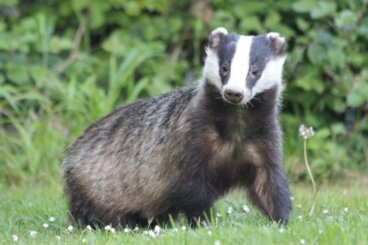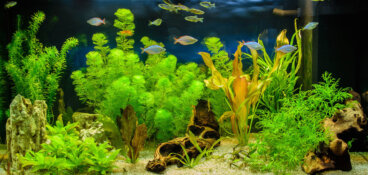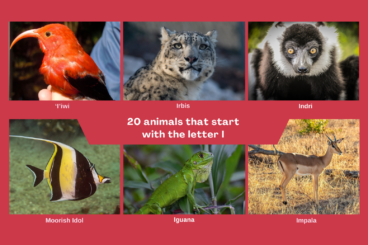Interesting Facts About Woodpeckers
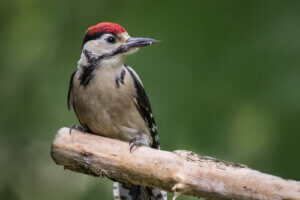
This animal was a part of many a childhood thanks to this very famous cartoon. Today, you can spot these birds in many regions of the world, and we want to bring you closer so that you can discover how hardworking they are. Are you ready to learn some interesting facts about woodpeckers?
The woodpecker
Features
Woodpeckers come in different sizes that can vary between approximately 8 and 23 inches. Their feather colors are bright green, purple, and orange, although there may be exceptions and other shades.
Their beak is strong, obviously, because of their great passion for drilling trees or other types of wood they find. They have four toes on their feet – two that go forward and two that go backward.
Food
Basically, these birds feed on worms and larvae. This is one of the reasons why they peck at trees, since many of these hide under tree bark. Their favorite food is ant larvae and termites. So, if there are termites in your house, now you know, you just need a woodpecker in your life!
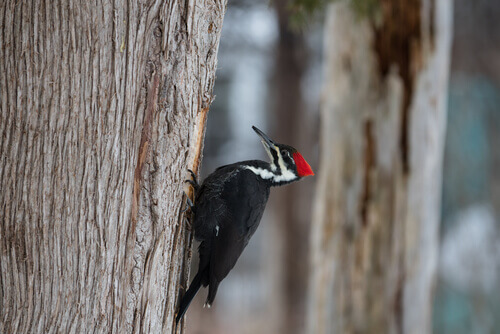
Different types of woodpeckers
Among woodpeckers, there are several varieties, which differ in shape, color, and even in some behavior. These are some of them:
- Green-barred woodpecker
- Ivory-billed woodpecker
- Yellow-browed woodpecker
- Checkered woodpecker
- White-bellied piculet
- White woodpecker
- Cream-backed woodpecker
- Imperial woodpecker
- Magellanic woodpecker
You can find them throughout the South American region, although there are many specimens in Central America and Europe.
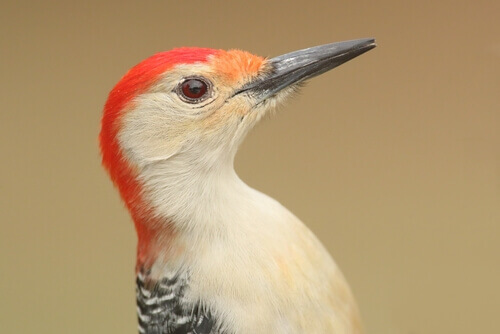
Interesting facts about woodpeckers
To know even more about these peculiar animals, we want to tell you some interesting facts about woodpeckers. Stick around!
- Blows with the beak: Woodpeckers are capable of making around 15 beak blows to a tree in a single second. That’s why the rattling we hear when there’s one around is so characteristic.
- Their nostrils and tongue are connected to the brain. This serves as a kind of cushion to prevent damage while pecking.
- Their heads reach the speed of a bullet while searching for food.
- The skulls of woodpeckers are thicker than that of other birds. As a sample of nature’s wisdom, their skulls protect their brains from the blows.
- They need a great amount of food. Woodpeckers seek food for themselves and their families. In fact, they may even share it with other birds nearby. This requires a great deal of energy, so they need to consume at least 900 or 1000 larvae.
- Woodpeckers can peck about 12,000 times a day.
- The blows to its head when it pecks are 1,000 times greater than the force of gravity.
- The acorn woodpecker species saves food for the winter. It feeds on acorns, so it can spend spring and summer storing them. It stores its acorns in trees, where it pecks until it makes a hole. The funny thing is that it only keeps one acorn in each tree.
- Woodpeckers are brave. Sometimes snakes and other predators try to enter their holes to steal their eggs or eat their young. But woodpeckers don’t flinch. Rather, they fight even if it means putting their life on the line, and they don’t stop until the predator flees.
As you can see, there are very interesting animals in nature that teach us important lessons. In this case, the woodpecker shows us the advantages of being hardworking, foresighted, and caring for one’s own. Who can deny that nature is wise?
This animal was a part of many a childhood thanks to this very famous cartoon. Today, you can spot these birds in many regions of the world, and we want to bring you closer so that you can discover how hardworking they are. Are you ready to learn some interesting facts about woodpeckers?
The woodpecker
Features
Woodpeckers come in different sizes that can vary between approximately 8 and 23 inches. Their feather colors are bright green, purple, and orange, although there may be exceptions and other shades.
Their beak is strong, obviously, because of their great passion for drilling trees or other types of wood they find. They have four toes on their feet – two that go forward and two that go backward.
Food
Basically, these birds feed on worms and larvae. This is one of the reasons why they peck at trees, since many of these hide under tree bark. Their favorite food is ant larvae and termites. So, if there are termites in your house, now you know, you just need a woodpecker in your life!

Different types of woodpeckers
Among woodpeckers, there are several varieties, which differ in shape, color, and even in some behavior. These are some of them:
- Green-barred woodpecker
- Ivory-billed woodpecker
- Yellow-browed woodpecker
- Checkered woodpecker
- White-bellied piculet
- White woodpecker
- Cream-backed woodpecker
- Imperial woodpecker
- Magellanic woodpecker
You can find them throughout the South American region, although there are many specimens in Central America and Europe.

Interesting facts about woodpeckers
To know even more about these peculiar animals, we want to tell you some interesting facts about woodpeckers. Stick around!
- Blows with the beak: Woodpeckers are capable of making around 15 beak blows to a tree in a single second. That’s why the rattling we hear when there’s one around is so characteristic.
- Their nostrils and tongue are connected to the brain. This serves as a kind of cushion to prevent damage while pecking.
- Their heads reach the speed of a bullet while searching for food.
- The skulls of woodpeckers are thicker than that of other birds. As a sample of nature’s wisdom, their skulls protect their brains from the blows.
- They need a great amount of food. Woodpeckers seek food for themselves and their families. In fact, they may even share it with other birds nearby. This requires a great deal of energy, so they need to consume at least 900 or 1000 larvae.
- Woodpeckers can peck about 12,000 times a day.
- The blows to its head when it pecks are 1,000 times greater than the force of gravity.
- The acorn woodpecker species saves food for the winter. It feeds on acorns, so it can spend spring and summer storing them. It stores its acorns in trees, where it pecks until it makes a hole. The funny thing is that it only keeps one acorn in each tree.
- Woodpeckers are brave. Sometimes snakes and other predators try to enter their holes to steal their eggs or eat their young. But woodpeckers don’t flinch. Rather, they fight even if it means putting their life on the line, and they don’t stop until the predator flees.
As you can see, there are very interesting animals in nature that teach us important lessons. In this case, the woodpecker shows us the advantages of being hardworking, foresighted, and caring for one’s own. Who can deny that nature is wise?
All cited sources were thoroughly reviewed by our team to ensure their quality, reliability, currency, and validity. The bibliography of this article was considered reliable and of academic or scientific accuracy.
- Budka, M., Deoniziak, K., Tumiel, T., & Woźna, J. T. (2018). Vocal individuality in drumming in great spotted woodpecker—A biological perspective and implications for conservation. Plos one, 13(2), e0191716. https://journals.plos.org/plosone/article?id=10.1371/journal.pone.0191716
- Bull, E. L., Beckwith, R. C., & Holthausen, R. S. (1992). Arthropod diet of pileated woodpeckers in northeastern Oregon. Northwestern Naturalist, 42-45. https://www.jstor.org/stable/3536688
- Collins, M. D. (2017). Periodic and transient motions of large woodpeckers. Scientific Reports, 7(1), 12551. https://www.ncbi.nlm.nih.gov/pmc/articles/PMC5624965/
- Flores, S. L., & Ardón, D. A. (2018). Social Organization and food habits of the acorn woodpecker (melarnerpes formicivirus) in the nootropics including observations in central hondura. Ornitología Neotropical, 29, 241-246. https://journals.sfu.ca/ornneo/index.php/ornneo/article/view/359
- Integrated Taxonomic Information System. (2020). Picidae. Recuperado el 30 de abril de 2023, disponible en: https://www.itis.gov/servlet/SingleRpt/SingleRpt?search_topic=TSN&search_value=178148#null
- International Union for Conservation of Nature. (2023). Search: Picidae-Family. Recuperado el 9 de mayo de 2023, disponible en: https://www.iucnredlist.org/fr/search?taxonomies=22673150&searchType=species
- Jung, J. Y., Naleway, S. E., Yaraghi, N. A., Herrera, S., Sherman, V. R., Bushong, E. A., … & McKittrick, J. (2016). Structural analysis of the tongue and hyoid apparatus in a woodpecker. Acta biomaterialia, 37, 1-13. https://www.sciencedirect.com/science/article/abs/pii/S174270611630126X
- Jung, J. Y., Pissarenko, A., Yaraghi, N. A., Naleway, S. E., Kisailus, D., Meyers, M. A., & McKittrick, J. (2018). A comparative analysis of the avian skull: Woodpeckers and chickens. Journal of the Mechanical Behavior of Biomedical Materials, 84, 273-280. https://www.sciencedirect.com/science/article/abs/pii/S175161611830688X
- Lee, N., Horstemeyer, M. F., Rhee, H., Nabors, B., Liao, J., & Williams, L. N. (2014). Hierarchical multiscale structure–property relationships of the red-bellied woodpecker (Melanerpes carolinus) beak. Journal of The Royal Society Interface, 11(96), 20140274. https://royalsocietypublishing.org/doi/full/10.1098/rsif.2014.0274
- Mikusiński, G., Gromadzki, M., & Chylarecki, P. (2001). Woodpeckers as indicators of forest bird diversity. Conservation biology, 15(1), 208-217. https://conbio.onlinelibrary.wiley.com/doi/abs/10.1111/j.1523-1739.2001.99236.x
- Moore, W. S., Weibel, A. C., & Agius, A. (2006). Mitochondrial DNA phylogeny of the woodpecker genus Veniliornis (Picidae, Picinae) and related genera implies convergent evolution of plumage patterns. Biological Journal of the Linnean Society, 87(4), 611-624. https://academic.oup.com/biolinnean/article/87/4/611/2691532
- U.S. Fish and Wildlife Service. (2021). U.S. Fish and Wildlife Service Proposes Delisting 23 Species from Endangered Species Act Due to Extinction. Recuperado el 9 de mayo de 2023, disponible en: https://www.fws.gov/press-release/2021-09/us-fish-and-wildlife-service-proposes-delisting-23-species-endangered-species?ref=u.s.-fish-and-wildlife-service-proposes-delisting-23-species-from-&_ID=37017
- Vincent, J. F. V., Sahinkaya, M. N., & O’shea, W. (2007). A woodpecker hammer. Proceedings of the Institution of Mechanical Engineers, Part C: Journal of Mechanical Engineering Science, 221(10), 1141-1147. https://www.researchgate.net/publication/245387767_A_woodpecker_hammer
- Wang, L., Cheung, J. T. M., Pu, F., Li, D., Zhang, M., & Fan, Y. (2011). Why do woodpeckers resist head impact injury: a biomechanical investigation. PloS one, 6(10), e26490. https://journals.plos.org/plosone/article?id=10.1371/journal.pone.0026490
- Wang, L., Zhang, H., & Fan, Y. (2011). Comparative study of the mechanical properties, micro-structure, and composition of the cranial and beak bones of the great spotted woodpecker and the lark bird. Science China Life Sciences, 54, 1036-1041. https://link.springer.com/article/10.1007/s11427-011-4242-2
- Zhou, P., Kong, X. Q., Wu, C. W., & Chen, Z. (2009). The novel mechanical property of tongue of a woodpecker. Journal of Bionic Engineering, 6(3), 214-218. https://www.sciencedirect.com/science/article/abs/pii/S1672652908601262
This text is provided for informational purposes only and does not replace consultation with a professional. If in doubt, consult your specialist.


